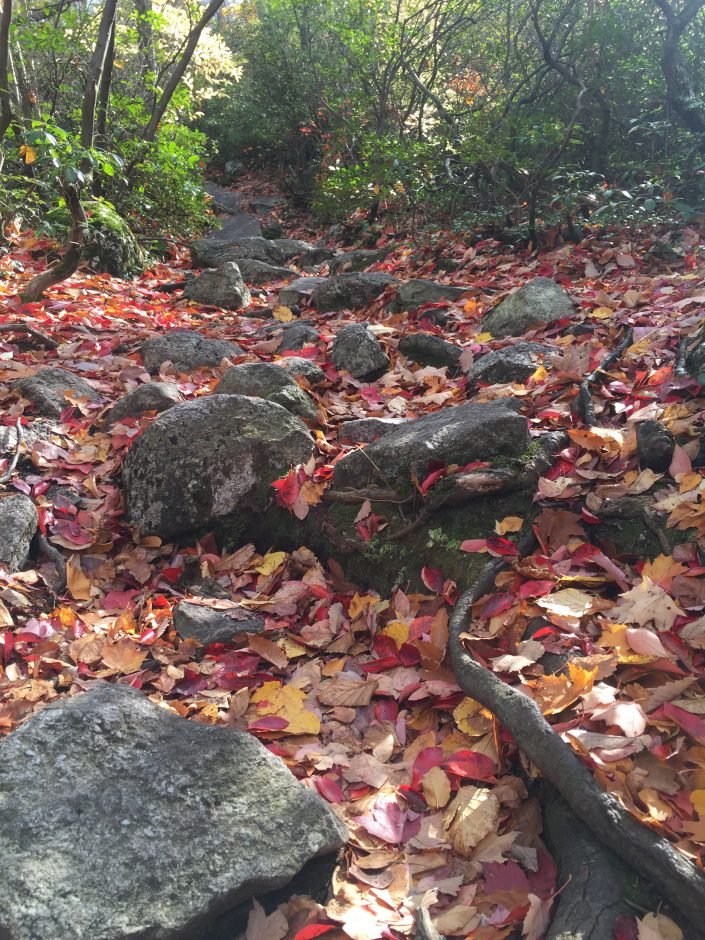Autumn in New Jersey: Why Do Trees Shed Their Leaves?
By Kendall Miller
It’s that time of year again. The trees around us, in our yards, on our streets, and in our forests are shedding their leaves with each gentle breeze or strong gust of wind. A dazzling display of colors drew tourists to gaze at our Northeast forests. After the brief but beautiful show, the leaves drift to the ground to litter the forest floor.

Our red, white, and black oaks, red and sugar maples, american beech, hickory, and cherries and other deciduous trees that dominate New Jersey forests all drop their broad leaves on cue. The few evergreen firs, spruce, and pines that we have hold on to their needle-leaves and contribute to the little greenery we have in the landscape until the following spring.
To us this simply signals another changing season in New Jersey. But to these trees, it offers a tactic for survival.
Shedding leaves presents a solution against unfavorable weather conditions. In temperate climates like New Jersey and the rest of the northeast, trees are dropping their leaves in preparation for a cold and dry winter. In other parts of the world, trees will drop their leaves at the onset of the dry season. They will also drop their leaves at other times of the year, like when they are experiencing a drought (have you ever noticed late summer and early fall leaf-dropping?) or other stresses like pests.
Deciduous is the term for trees that lose all of their leaves for a part of the year. The word translates to “to cut off a part that is not needed”. Evergreen, on the other hand, is a term to describe trees that are adorned in leaves all year round. In New Jersey the general distinction is usually broadleaf means deciduous and conifer means evergreen, however there are always exceptions to the rules. Tamarack or American larch are coniferous trees that drop all their needles after a drastic yellow showcase, and “live oaks” are a type of oak that remain evergreen even in cooler climates.
So why does shedding their leaves help deciduous trees to survive challenging times? In the temperate Northeast, the winter poses many challenges – it is cold, dry, and there is less sunlight to be soaked up. The broad leaves of deciduous trees are very good at photosynthesizing but poor at retaining water and are susceptible to freezing.

The strategy of deciduous trees is to photosynthesize rapidly with their efficient leaves during the warm, wet, and long days of the spring and summer, and to shed leaves and wait out the winter in a state of dormancy. Come spring, new leaves will sprout to replace the old. Growing a whole new set of leaves requires a lot of nutrients, so deciduous trees dominate in areas with rich soils.
So when the daylight shrinks, hormones in the tree send signals to begin the abscission, or cutting, process. First, the trees reabsorb the nutrients in their leaves. A cell layer, called an abscission layer, forms between the stem and the branch, effectively cutting the leaf off from the rest of the tree.
This leaves a fragile connection so that, eventually, a rainstorm or strong wind breaks the leaves from the trees to litter the floor. In forests, the leaf litter provides a valuable influx of nutrients into the soil. But maybe in your yard, it becomes an arduous autumn chore. Consider instead, leaving some leaves on the ground. Going over the leaves with a mower breaks crunch leaves into tiny pieces, acts as mulch, and can actually impede weed growth. Spend more time enjoy crisp, sunny fall days off by making the annual leaf drop work for you rather than against you.
Kendall Miller is a Project Coordinator and Education Assistant for Conserve Wildlife Foundation
LEARN MORE
Discover more from Conserve Wildlife Foundation of NJ
Subscribe to get the latest posts sent to your email.